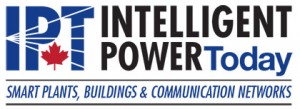Solid-State Relays (SSR)
Advancements in SSR Control Technologies
SSRs in Industrial Automation and Control Systems
Solid-State Relays (SSR)
SSR Lifetime and Degradation Mechanisms
Solid-State Relays (SSRs) are favored in various applications for their durability and long operational life compared to electromechanical relays. However, like all electronic components, SSRs can degrade over time due to several factors. Understanding these degradation mechanisms is essential for optimizing SSR performance and reliability in system design.
Solid-state relays (SSRs) have established themselves as reliable workhorses in control systems, offering silent, fast-switching alternatives to traditional electromechanical relays. However, unlike their mechanical counterparts with well-defined wear mechanisms, SSRs degrade over time due to the nature of their semiconductor components. Understanding these degradation mechanisms and factors affecting SSR lifetime is crucial for system designers to ensure reliable operation and prevent unexpected failures.
Factors Affecting SSR Lifetime
Thermal Stress
One of the primary factors influencing SSR longevity is thermal stress. Excessive heat generated during operation can accelerate the aging of semiconductor components, leading to reduced functionality and eventual failure.
Electrical Overload
SSRs are designed to handle specific voltage and current levels. Exceeding these ratings can cause electrical stress and damage the internal semiconductor elements, shortening the relay's lifespan.
Switching Frequency
The life of an SSR is also affected by its switching frequency. High-frequency switching can lead to increased thermal and electrical stress,...
Related Articles
SSRs in Industrial Automation and Control Systems
Solid-State Relays (SSRs) are increasingly becoming the go-to choice for industrial automation and control systems, thanks to their fast switching speeds, precise control, and long-lasting durability. These attributes make SSRs particularly suitable for controlling motors, valves, and other...
SSRs for Renewable Energy Systems
Solid-State Relays (SSRs) are becoming increasingly vital in the renewable energy sector, where they serve as key components for switching applications in solar inverters, wind turbine control systems, and other renewable energy equipment. Their inherent advantages make them well-suited for the...
Integration of SSRs with Communication Protocols
Solid-State Relays (SSRs) are evolving beyond their traditional roles, with newer models offering integrated communication capabilities. These SSRs, capable of interfacing with protocols like Modbus, are setting a new standard in electrical protection and control. This article explores the benefits...
Heat Sink Selection and Thermal Management for SSRs
Solid-State Relays (SSRs) are a crucial component in modern electrical systems, known for their silent operation, fast switching, and durability. However, unlike electromechanical relays, SSRs generate significant heat during operation, necessitating effective thermal management to ensure...
SSRs for Renewable Energy Systems
Solid-State Relays (SSRs) are becoming increasingly vital in the renewable energy sector, where they serve as key components for switching applications in solar inverters, wind turbine control systems, and other renewable energy equipment. Their inherent advantages make them well-suited for the...
SSRs in Industrial Automation and Control Systems
Solid-State Relays (SSRs) are increasingly becoming the go-to choice for industrial automation and control systems, thanks to their fast switching speeds, precise control, and long-lasting durability. These attributes make SSRs particularly suitable for controlling motors, valves, and other...
Integration of SSRs with Communication Protocols
Solid-State Relays (SSRs) are evolving beyond their traditional roles, with newer models offering integrated communication capabilities. These SSRs, capable of interfacing with protocols like Modbus, are setting a new standard in electrical protection and control. This article explores the benefits...
High-Voltage and High-Current SSR Applications
Solid-State Relays (SSRs) are evolving to accommodate applications that require high voltage and high current control, breaking traditional boundaries and opening new possibilities in industrial, commercial, and energy sectors. This article delves into the emerging technologies behind high-power...
Advancements in SSR Control Technologies
Solid-State Relays (SSRs) have evolved significantly, incorporating various control interfaces to meet the diverse needs of modern electrical systems. These interfaces, including Direct Current (DC), Alternating Current (AC), and logic-level signals, offer distinct advantages for different...
Surge Protection for Solid-State Relays
Solid-State Relays (SSRs) are integral components in modern electrical systems, known for their reliability and fast switching capabilities. However, their sensitive electronics can be vulnerable to transient voltage spikes, or surges, which can cause damage and reduce their operational life....
